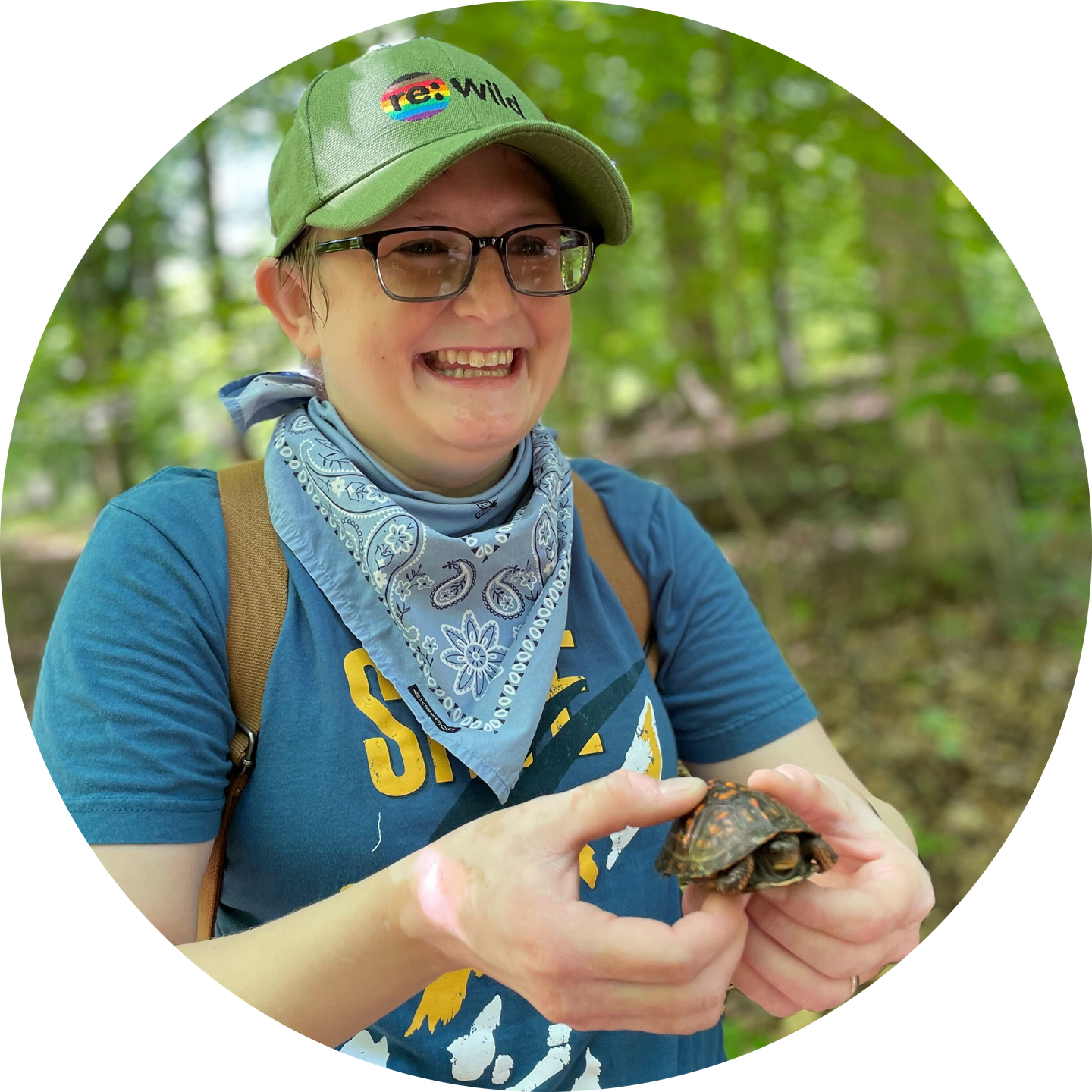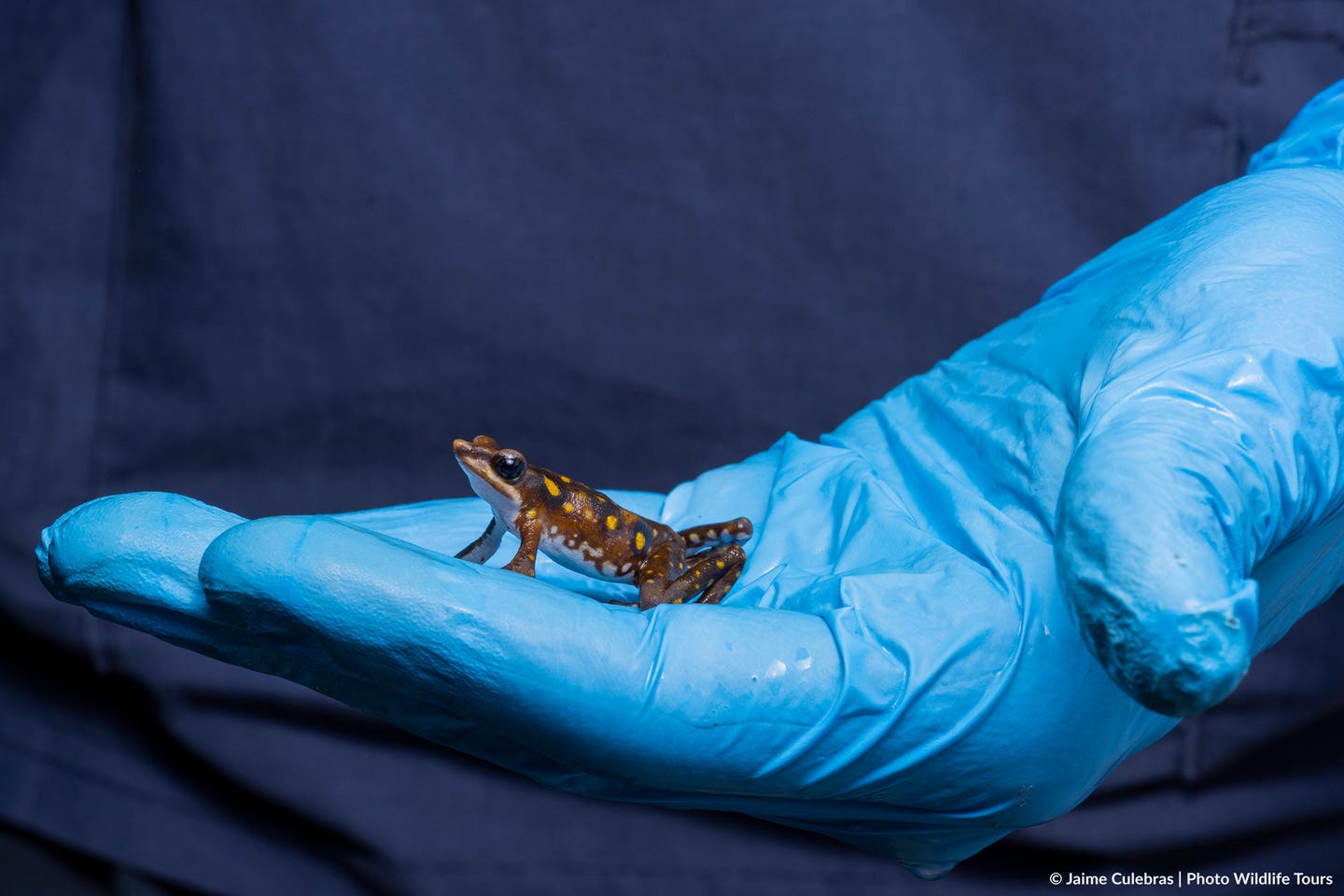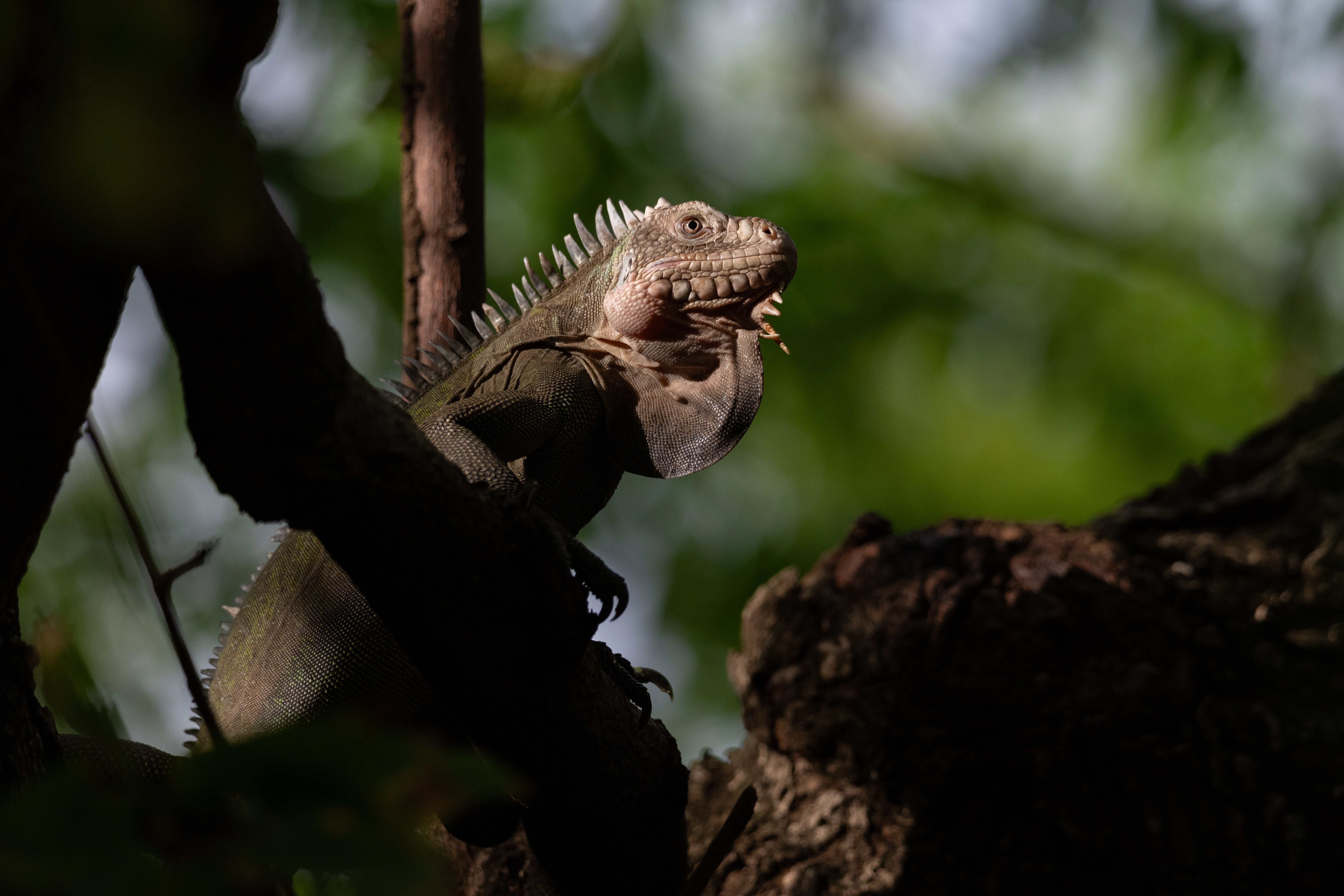On the same day that Ecuador’s provincial court is hearing a case to determine the future of the country’s incredibly biodiverse Intag Valley, the IUCN Red List of Threatened Species has officially updated the status of the longnose harlequin toad (Atelopus longirostris)--found only in Intag Valley--from extinct to critically endangered.
"The rediscovery of the longnose harlequin toad after nearly three decades was one of the most exciting and hopeful rediscoveries of a lost species in recent years," said Lina Valencia, Andean countries coordinator for Re:wild and leading founder of the Atelopus Survival Initiative. "But the moment the toad was rediscovered, it was already threatened by ongoing efforts to mine its only home for copper. Today, Ecuador and the world faces losing the longnose harlequin toad and a number of rare species if mining at Intag is not stopped."
For the past 30 years, the Intag Valley region has been the target of numerous mining corporations hoping to develop a copper mine, including the most recent: a large-scale open-pit copper mining project by Codelco, the Chilean state-owned mining company and the world’s biggest copper producer, along with Empresa Nacional Minera del Ecuador (Enami), Ecuador’s state-owned mining company.
Local communities, which are profoundly connected to the land and wildlife around them, have been fighting off mining in the area for nearly three decades. In 2008, Ecuador became the first country in the world to recognize the constitutional rights of nature and this case could help set precedence for those rights.
Today’s hearing in the provincial court of Imbabura province is the result of an appeal of a February ruling in the Cotacachi canton court, where a legal team representing local communities in Intag Valley argued that mining there violates the constitutional rights of local communities to consultation and the rights of nature. The court disagreed, ruling that Enami and Codelco didn't have to stop the project and no rights were violated.
One of the arguments in the case is that the mining companies failed to include critical species in both their 2014 Environmental Impact Assessment (EIA) of the mine’s concession, called the Llurimagua concession, and in their 2018 EIA to expand the concession. The 2018 EIA did not include the longnose harlequin toad, despite its widely known rediscovery in 2016, in addition to a number of other rare frog species found nowhere else in the world.
An independent partial survey of amphibians living in the Llurimagua mining site by Centro Jambatu for Amphibian Research and Conservation found 22 species of frogs living in a part of the concession area, and nearly half of those species are endangered. The center believes that there could be closer to 100 species, many of them endemic and threatened with extinction (critically endangered and possibly extinct).
Intag Valley is one of the most biodiverse places on the planet and nestled in the Tropical Andes Biodiversity Hotspot. The cloud forests of Intag Valley are home to dozens of critically endangered species, of which some--like the black-breasted puffleg hummingbird--are found nowhere else in the world. The valley also includes the Intag-Toisan Key Biodiversity Area (KBA). KBAs are critical to the persistence of life on Earth.
"These companies have not done anything to demonstrate that they have any interest in the wellbeing of the local communities or the rare wildlife in Intag," said Carlos Zorrilla, co-founder of Defensa y Conservación de Intag, which has been supporting local communities’ case against the Llurimagua mining project. "If this is allowed to move forward, it will require the relocation of at least four communities and so much deforestation that it will lead to climate change at the local level, stripping thousands of hectares of primary cloud forests and contaminating rivers and streams. In no uncertain terms, it will be the end of the longnose harlequin toad."
Although the IUCN Red List is today officially updating the status of the longnose harlequin toad from extinct to critically endangered, the species was rediscovered in 2016, when a population of only two males and two females was found in Intag Valley after the amphibian had been lost for nearly 30 years. The longnose harlequin toad was once abundant, but in the late ’80s the toad suddenly vanished, along with nearly a dozen other Ecuadorian amphibian species.
"It is exceedingly rare for a species that has been declared extinct by the IUCN Red List to be found," said Kelsey Neam, Re:wild biodiversity assessments coordinator and program officer for the IUCN SSC Amphibian Specialist Group Amphibian Red List Authority. "We cannot now seal the longnose harlequin toad’s fate with mining and the deforestation and pollution that comes with it."
When the small population of longnose harlequin toads was rediscovered in 2016, the Centro Jambatu for Amphibian Research and Conservation moved quickly, bringing a few of the toads into a conservation breeding program. Jambatu is the only place in the world attempting to breed the species and is the only place, outside of the wild, the toads exist. Jambatu has now successfully reproduced longnose harlequin toads multiple times, in 2018, 2020 and this year. With those breeding achievements and the collection of additional tadpoles, the founding population of four has turned into today’s insurance population of more than 200 individual longnose harlequin toad adults, juveniles and tadpoles.
"It is a relief to know that we can breed this species successfully and that we have an insurance population that we can return to the wild, ultimately with the goal of a self-sustaining population," said Andrea Terán-Valdez, collections manager at Centro Jambatu for Amphibian Research and Conservation. "But that means we must have a wild to return the animals to where they have all of the conditions they need to survive. So we will continue to fight for the rights of nature and the rights of the communities whose livelihoods, culture and lives are intrinsically linked to the diversity of life in Intag Valley."
Additional quotes
Ariadne Angulo, IUCN Species Survival Commission Amphibian Specialist Group "The provincial court of Imbabura is getting a precious second chance to do the right thing for nature and for the local communities of Intag. If they do not take this opportunity they need to be prepared to be accountable for the extinction in the wild of the longnose harlequin toad. How many more extinctions will it take to do what is a mandatory necessity?"
Candace Hansen, Amphibian Survival Alliance "Amphibians, including the longnose harlequin toad, play an intrinsic part of our lives, even though their contribution may go unnoticed. The intensifying plight of wildlife mirrors our own struggle, as we work to protect natural resources and bring about a sustainable future for all life on our shared planet. Too often we fail to realize how important a species is until it’s gone, so we must work together at all levels to do what’s necessary to save them from extinction."
Pria Ghosh, Synchronicity Earth "This hearing is a rare second chance for authorities, people, and corporations to do the right thing and step back from condemning a species to extinction. We thought that the longnose harlequin toad was lost forever but we now have a chance to restore and protect this forest jewel for future generations. By refusing to destroy the unique Intag Valley and its species, Ecuador would send a loud and clear message around the world that it is willing to stand up for the rights of local people and nature."
# # #
Photo: A longnose harlequin toad. (Photo by Gustavo Pazmiño)
Re:wild Re:wild protects and restores the wild. We have a singular and powerful focus: the wild as the most effective solution to the interconnected climate, biodiversity and human health crises. Founded by a group of renowned conservation scientists together with Leonardo DiCaprio, Re:wild is a force multiplier that brings together Indigenous peoples, local communities, influential leaders, nongovernmental organizations, governments, companies and the public to protect and rewild at the scale and speed we need. Learn more at rewild.org.
Alianza por los Derechos Humanos Ecuador The Alliance for Human Rights of Ecuador is a group of organizations formed in the context of the National Strike of October 2019 and is currently consolidated during the health emergency due to the COVID-19 pandemic. We are 15 organizations that combine efforts, experiences and knowledge to develop a collective work that contributes to the respect and guarantee of human rights, peoples and nature. We carry out advocacy processes before the competent authorities and in the national and international public opinion, as well as in the national and international systems for the protection of human rights. https://ddhhecuador.org/ Twitter: @DDHH_Alianza
Centro Jambatu for Amphibian Research and Conservation Centro Jambatu generates knowledge and research about amphibians, with the aim of developing technologies and implementing a modern “Noah’s Ark” for endangered frogs. The center works with scientists, conservationists, educators, communicators, and local communities to mitigate and prevent the decline and extinction of amphibians. Conservation action is taken proactively, addressing and mitigate both traditional and new threats to frogs, toads, salamanders and caecilians.
Decoin (Defensa y Conservación Ecológica de Intag) DECOIN was founded in 1995 as a response to the mining threat in Intag. It is still our main focus of work. We work closely with communities and local governments aligned with our vision, with whom we have been able to conserve 12,000 hectares (30,000 acres) of native forests and created 38 community-owned forest reserves that protect water sources and dozens of endangered species. Along the way, we’ve planted tens of thousands of native trees and supported sustainable activities, such as community ecotourism and shade-grown coffee. Because of our work, in 2017 the UN awarded us the Equator Prize.
American Bird Conservancy American Bird Conservancy is a nonprofit organization dedicated to conserving wild birds and their habitats throughout the Americas. With an emphasis on achieving results and working in partnership, we take on the greatest problems facing birds today, innovating and building on rapid advancements in science to halt extinctions, protect habitats, eliminate threats, and build capacity for bird conservation. Find us on abcbirds.org, Facebook, Instagram, and Twitter (@ABCbirds).
Amphibian Survival Alliance The Amphibian Survival Alliance (ASA) promotes the conservation of amphibians and their habitats through dynamic partnerships worldwide. The ASA raises awareness of amphibians and their plight, and helps channel vital resources towards the implementation of vital conservation actions, as guided by the global Amphibian Conservation Action Plan. ASA works directly with the IUCN SSC Amphibian Specialist Group and Amphibian Ark to achieve the shared vision of “Amphibians thriving in nature”. ASA champions the extraordinary work of its partners and seeks to recruit diverse new partners to build a strong, collaborative future for amphibian conservation. Learn more at www.amphibians.org.
Atelopus Survival Initiative The Atelopus Survival Initiative is a collaborative and coordinated network that includes national and international conservation groups, zoos, conservation breeding centers, academic institutions, governments and local communities working together to implement substantial, long-term and range-wide conservation measures for harlequin toads. Learn more at https://www.atelopus.org
IUCN SSC Amphibian Specialist Group The Amphibian Specialist Group (ASG) is part of the Species Survival Commission (SSC) of the International Union for Conservation of Nature (IUCN). It provides the scientific foundation to inform effective amphibian conservation action around the world. Under the umbrella of the ASG, the Amphibian Red List Authority oversees the assessments of all amphibians on The IUCN Red List of Threatened Species. ASG, together with ASA and Amphibian Ark, share a common vision of “Amphibians thriving in nature”. Learn more at https://www.iucn-amphibians.org/.
Rainforest Concern Rainforest Concern’s mission is to protect threatened natural habitats and the biodiversity they contain, together with the indigenous people dependent on them for survival.
Synchronicity Earth Synchronicity Earth is a UK-based conservation charity that acts to address overlooked and underfunded conservation challenges for globally threatened species and ecosystems.
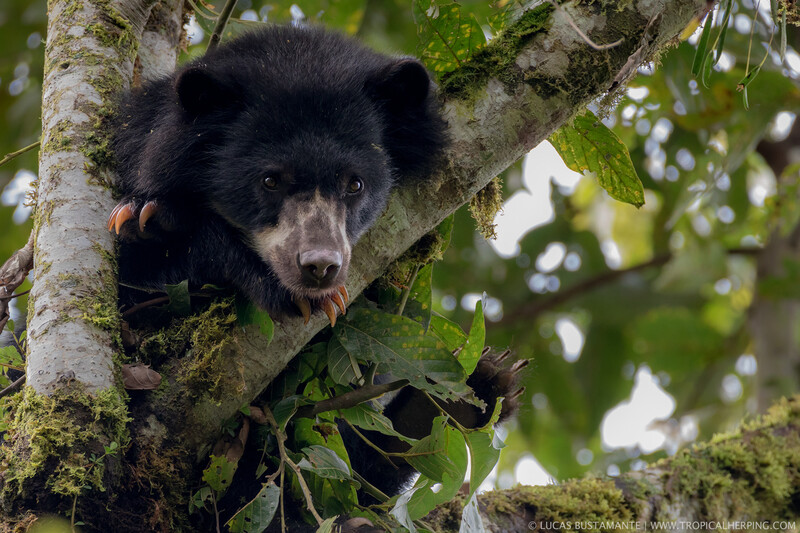
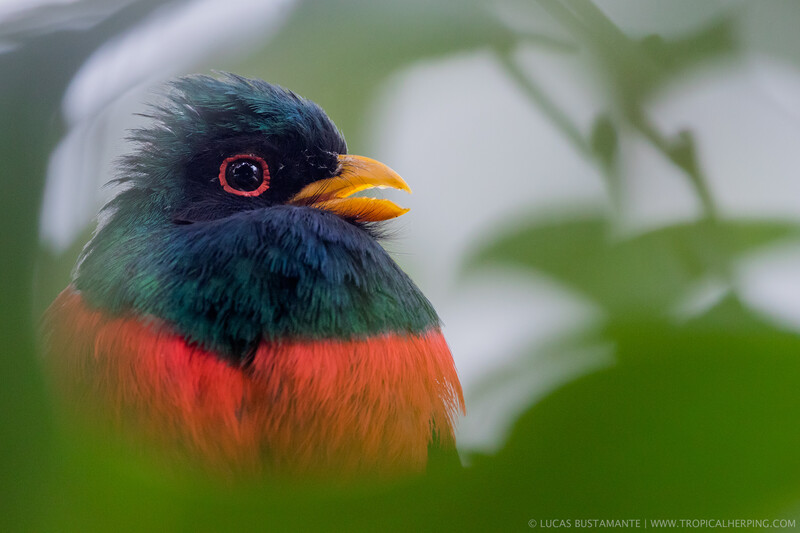




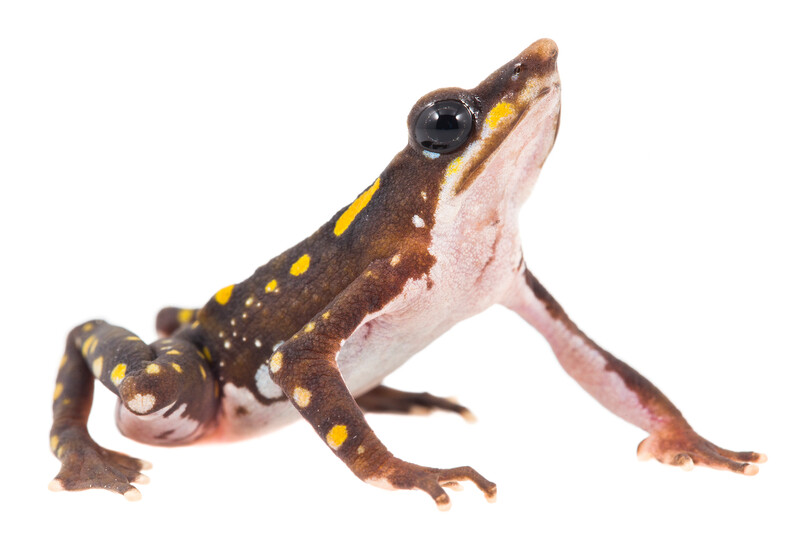






Devin Murphy
Writer
Devin Murphy is Re:wilds’s senior communications specialist and helps Re:wild and its partners tell stories about the work they do to protect wildlife and wildlands around the planet. Her favorite stories about conservation include fascinating and little-known species and the dedicated humans protecting them.
